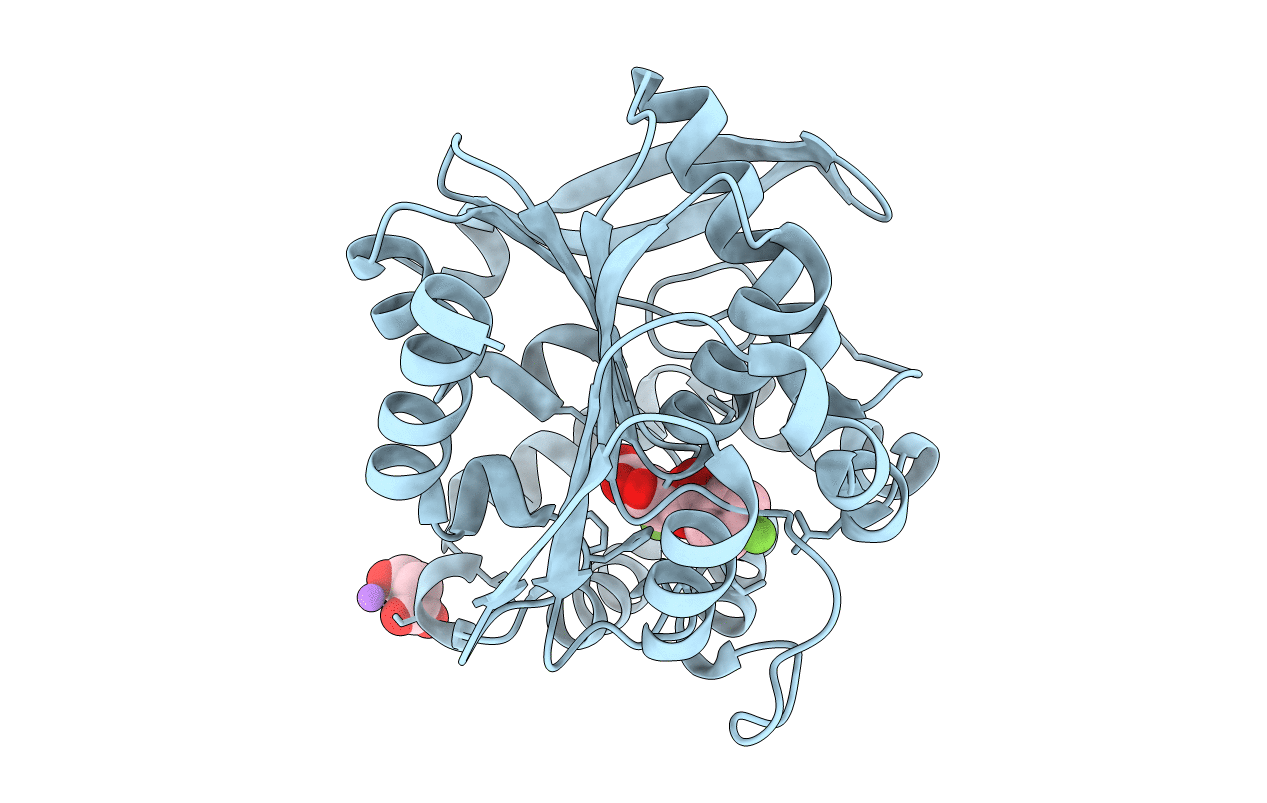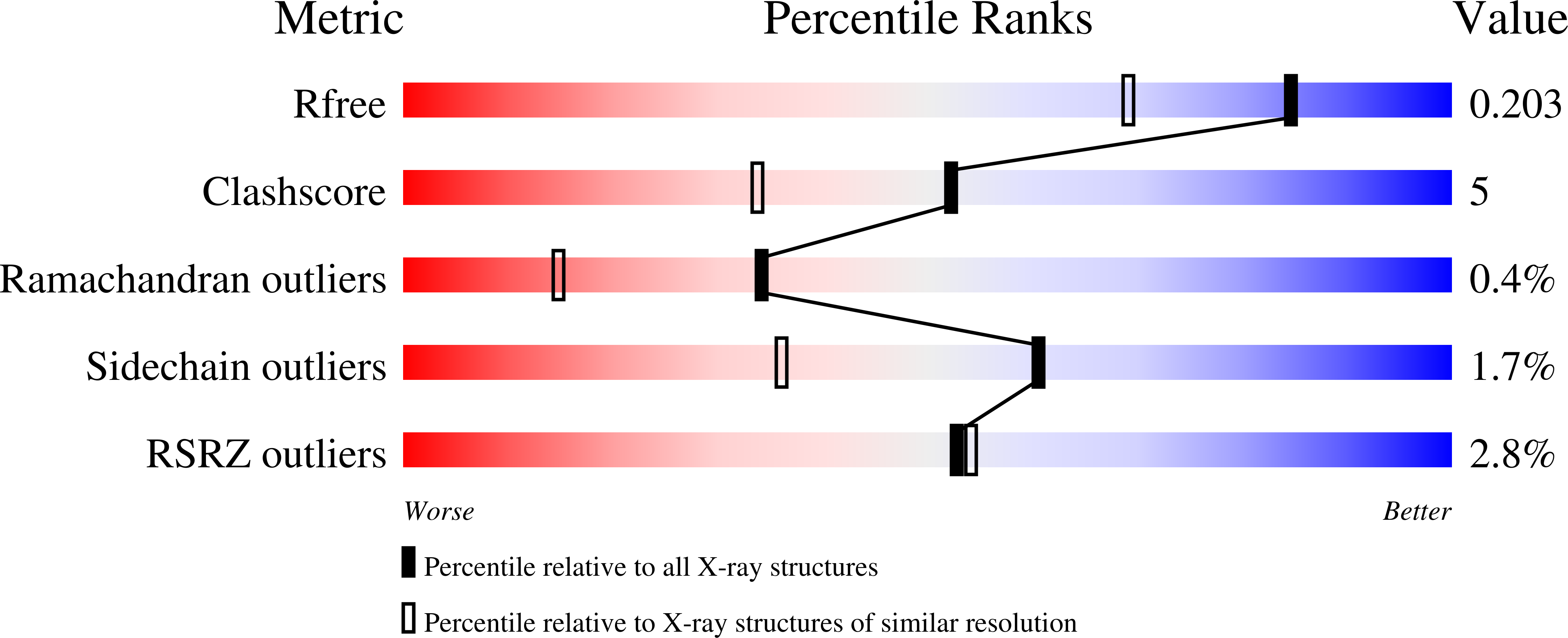
Deposition Date
2007-10-09
Release Date
2007-11-13
Last Version Date
2024-02-21
Entry Detail
PDB ID:
2RHW
Keywords:
Title:
Crystal Structure of the S112A mutant of a C-C hydrolase, BphD from Burkholderia xenovorans LB400, in complex with 3,10-Di-Fluoro HOPDA
Biological Source:
Source Organism:
Burkholderia xenovorans (Taxon ID: 266265)
Method Details:
Experimental Method:
Resolution:
1.57 Å
R-Value Free:
0.20
R-Value Work:
0.17
R-Value Observed:
0.17
Space Group:
I 41 2 2


